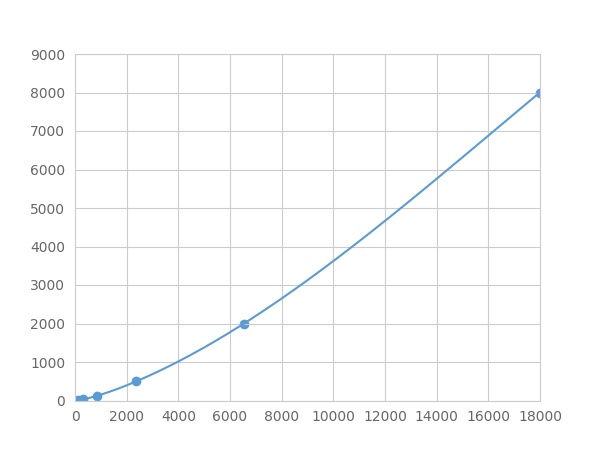Packages (Simulation)

Reagent Preparation

Image (I)
Image (II)
Certificate


Multiplex Assay Kit for Transferrin Receptor (TFR) ,etc. by FLIA (Flow Luminescence Immunoassay)
CD71; TFR1; P90; TFRC; T9; Trfr; sTfR; Transferrin receptor protein 1, serum form
(Note: Up to 8-plex in one testing reaction)
- Product No.LMB171Hu
- Organism SpeciesHomo sapiens (Human) Same name, Different species.
- Sample Typeserum, plasma, tissue homogenates, cell lysates and other biological fluids
- Test MethodDouble-antibody Sandwich
- Assay Length3.5h
- Detection Range7.81-8000pg/mL
- SensitivityThe minimum detectable dose of this kit is typically less than 2.603 pg/mL.
- DownloadInstruction Manual
- UOM 8Plex 7Plex 6Plex 5Plex 4Plex 3Plex 2Plex1Plex
- FOB
US$ 415
US$ 431
US$ 455
US$ 487
US$ 519
US$ 567
US$ 638
US$ 798
Add to Price Calculator
Result
For more details, please contact local distributors!
Specificity
This assay has high sensitivity and excellent specificity for detection of Transferrin Receptor (TFR) ,etc. by FLIA (Flow Luminescence Immunoassay).
No significant cross-reactivity or interference between Transferrin Receptor (TFR) ,etc. by FLIA (Flow Luminescence Immunoassay) and analogues was observed.
Recovery
Matrices listed below were spiked with certain level of recombinant Transferrin Receptor (TFR) ,etc. by FLIA (Flow Luminescence Immunoassay) and the recovery rates were calculated by comparing the measured value to the expected amount of Transferrin Receptor (TFR) ,etc. by FLIA (Flow Luminescence Immunoassay) in samples.
| Matrix | Recovery range (%) | Average(%) |
| serum(n=5) | 79-104 | 86 |
| EDTA plasma(n=5) | 89-101 | 96 |
| heparin plasma(n=5) | 89-96 | 92 |
Precision
Intra-assay Precision (Precision within an assay): 3 samples with low, middle and high level Transferrin Receptor (TFR) ,etc. by FLIA (Flow Luminescence Immunoassay) were tested 20 times on one plate, respectively.
Inter-assay Precision (Precision between assays): 3 samples with low, middle and high level Transferrin Receptor (TFR) ,etc. by FLIA (Flow Luminescence Immunoassay) were tested on 3 different plates, 8 replicates in each plate.
CV(%) = SD/meanX100
Intra-Assay: CV<10%
Inter-Assay: CV<12%
Linearity
The linearity of the kit was assayed by testing samples spiked with appropriate concentration of Transferrin Receptor (TFR) ,etc. by FLIA (Flow Luminescence Immunoassay) and their serial dilutions. The results were demonstrated by the percentage of calculated concentration to the expected.
| Sample | 1:2 | 1:4 | 1:8 | 1:16 |
| serum(n=5) | 95-105% | 89-103% | 84-103% | 79-103% |
| EDTA plasma(n=5) | 98-105% | 92-101% | 99-105% | 92-103% |
| heparin plasma(n=5) | 80-103% | 96-103% | 84-102% | 94-102% |
Stability
The stability of kit is determined by the loss rate of activity. The loss rate of this kit is less than 5% within the expiration date under appropriate storage condition.
To minimize extra influence on the performance, operation procedures and lab conditions, especially room temperature, air humidity, incubator temperature should be strictly controlled. It is also strongly suggested that the whole assay is performed by the same operator from the beginning to the end.
Reagents and materials provided
| Reagents | Quantity | Reagents | Quantity |
| 96-well plate | 1 | Plate sealer for 96 wells | 4 |
| Pre-Mixed Standard | 2 | Standard Diluent | 1×20mL |
| Pre-Mixed Magnetic beads (22#:TFR) | 1 | Analysis buffer | 1×20mL |
| Pre-Mixed Detection Reagent A | 1×120μL | Assay Diluent A | 1×12mL |
| Detection Reagent B (PE-SA) | 1×120μL | Assay Diluent B | 1×12mL |
| Sheath Fluid | 1×10mL | Wash Buffer (30 × concentrate) | 1×20mL |
| Instruction manual | 1 |
Assay procedure summary
1. Preparation of standards, reagents and samples before the experiment;
2. Add 100μL standard or sample to each well,
add 10μL magnetic beads, and incubate 90min at 37°C on shaker;
3. Remove liquid on magnetic frame, add 100μL prepared Detection Reagent A. Incubate 60min at 37°C on shaker;
4. Wash plate on magnetic frame for three times;
5. Add 100μL prepared Detection Reagent B, and incubate 30 min at 37°C on shaker;
6. Wash plate on magnetic frame for three times;
7. Add 100μL sheath solution, swirl for 2 minutes, read on the machine.
GIVEAWAYS
INCREMENT SERVICES
| Magazine | Citations |
| British Journal of Nutrition | Survey of anaemia and Helicobacter pylori infection in adolescent girls in Suihua, China and enhancement of iron intervention effects by H. pylori eradication PubMed: 22004585 |
| Food Funct | The effects of polysaccharides from the root of Angelica sinensis on tumor growth and iron metabolism in H22-bearing mice Pubmed:26757699 |
| Physiological research | The Labile Iron Pool in Monocytes Reflects the Activity of the Atherosclerotic Process in Men with Chronic Cardiovascular Disease pubmed:27782743 |
| Clinical and Experimental Medicine | Increased NGAL level associated with iron store in chronic kidney disease with anemia Pubmed:29909502 |
| J Mol Cell Cardiol | Systemic iron deficiency does not affect the cardiac iron content and progression of heart failure 34139233 |





